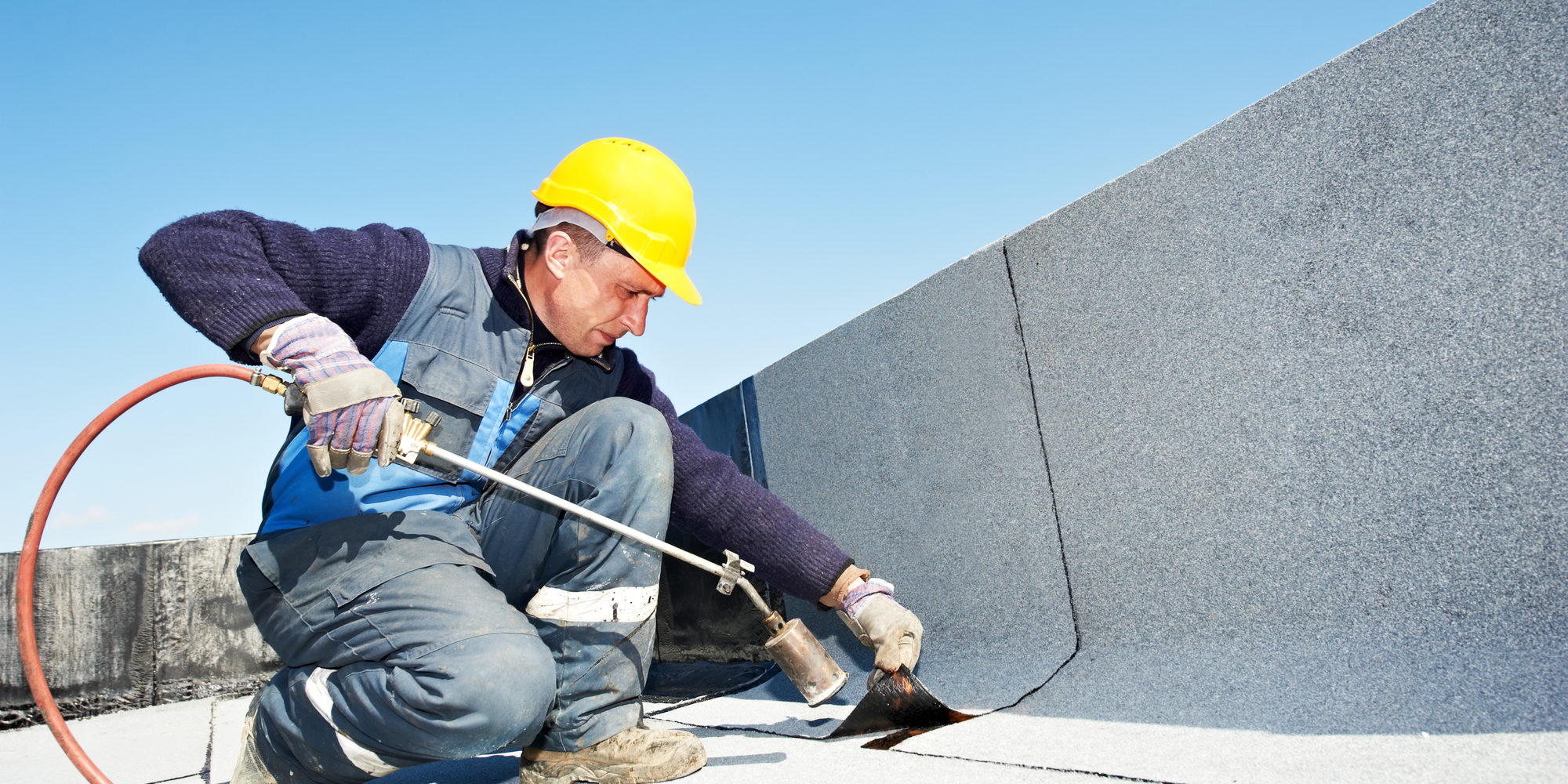Flat roofs have been kind of the black sheep of the roofing family, here in the U.S., for quite some time. Sure, we see them all the time on commercial/public buildings, but it’s pretty rare to see these on most residential structures outside certain regions (they’re common in arid climates due to their wind resistance, and the reduced rain that occurs there).
Flat roofs have their benefits and their drawbacks, like any roof. They can make replacement a real challenge, more so than many other roofing types you’d expect a challenge from. Before you commit to a flat roof or dismiss it, let’s take the time to learn a bit of time to learn more about them. It’s best to go into any decision like this as informed as possible, of course.
They’re Not Really Flat
Yeah, it’s actually a bit of a misnomer. They certainly seem flat when you stand on them, they certainly look flat by casual observation, but they’re not truly flat. Dropping anything that can roll will show it quite clearly, and any level will back this claim up as well. These roofs have to contend with precipitation, which can even happen in the desert, so a slope of at least ¼ inch per foot is needed to guide the water to a drainage system.
Terms Demystified:
- Pitch – Pitch is the ratio of the roof’s rise (vertical height per horizontal unit), and span (distance across).
- Slope – is the ratio between the rise and run.
The Aspects of Flat Roof Systems
As we said, you commonly see flat roofs on industrial, commercial, government, and public structures. There are reasons for this, and we’re going to look at these now.
- Structure – Such buildings tend to be utterly immense, which makes pitched/slanted roofs not impossible, but highly impractical and difficult to implement them. Flat roofs are much easier (and often safer) to implement across such vast amounts of space. It’s also more affordable.
- Additional Space – These sorts of structures need a lot of ventilation and HVAC components, which have to be mounted on the roof. With a flat roof, these massive installations are more sound, and much easier to put in place. It’s also easier to repair/replace/maintain such equipment with a flat roof.• Ease of Maintenance/Inspection – These flat roofs are much easier to inspect, maintain, and repair on such large structures. Massive area-covering pitched roofs would be a nightmare to deal with, and in cases where such roofs exist to that scale, this has been more than documented over the years.
- Efficiency – Flat roofs tend to be very energy-efficient, which is a major concern with such immense structures. There have been recorded savings of 30-40% with flat roofs. Also, a primary ingredient of flat roofing, atactic polypropylene (APP) is a recycled byproduct, which is environmentally sound.
The Cons of Flat Roofs
So far, it sounds like the benefits flat roofs have to such large commercial structures, should translate nicely to an average home, with similar, scaled-up benefits. This isn’t entirely untrue, but there are some downsides to flat roofs that you need to consider before going all in with this.
For one, they require a lot more maintenance than slanted roofs, due to their flush exposure to the elements. The less modular nature of the materials means that repairs can be more arduous and costly in some cases as well.
They’re more likely to develop leaks more quickly than other types of roof and are more prone to ice dams, and debris builds up as well. They have, therefore, to be cleaned more often, and de-iced in harsh winters.
Flat Roof Types
Not all flat roofs are the same. There are in fact a few different types of these roofs, and let’s take a quick look at some of them.
- Built-up Roofing (BUR) – This is the most common type used in industrial/commercial structures. There is a layer of waterproof membrane (usually fiberglass or an advanced synthetic), and some tar and gravel as a sealant. These have been used in residential applications as well because they’re affordable and relatively resilient. However, the sealing liquid is quite noxious, and the gravel can cause drainage clogs if you’re not very careful.
- Rubber Roofs (EPDM) – These are far more common for residential use than BUR. They consist primarily of a rubber-type layer, which self-adheres to the metal/gravel underlayer. It’s regarded as very easy to install/replace, but seams like to form int his, it can shrink in cold weather, and leaks can develop quickly.
- MBS – Modified bitumen systems are becoming a favored alternative to the previous two types. These are specially-formulated layers that seal and bond without the use of hot liquids or other noxious substances. They’re very cost-saving and have less of the seam/leakage/shrinkage problems that EPDM roofs have, and don’t have the loose, clogging materials that are common with BUR.
If you’re a homeowner still interested in a flat roofing system, MBS is probably the best choice, and it’s available as a torch-down system (use of heat to seal it), or self-adhering (cheaper, but less stable).
Of course, you don’t want to settle for subpar roofing materials, regardless of the type. Thankfully, GAF and other makers of high-regard roofing materials offer top-of-the-line flat roofing. Their Commercial/Flat roofing systems are perfectly viable for residential use, with products ranging across all of the types we’ve covered here, and many more unique technologies they’ve pioneered.
To learn more about flat roofs and other roofing options, fill out our contact form right away. At RGB Construction, we know roofing!







